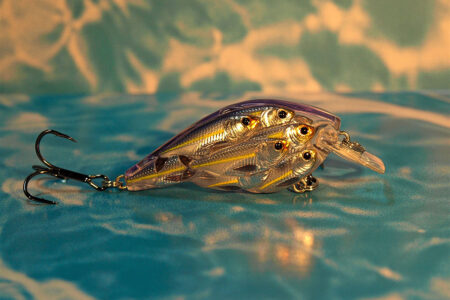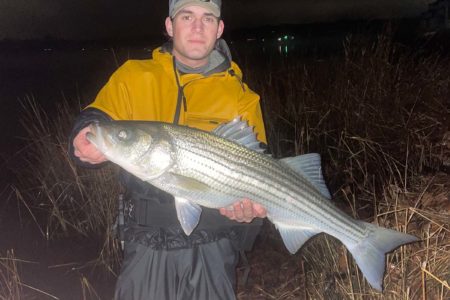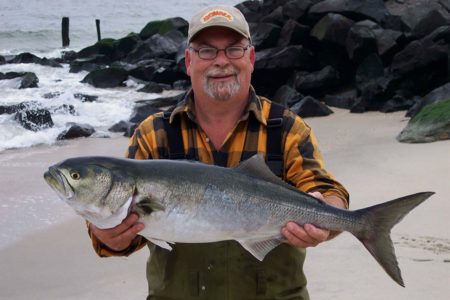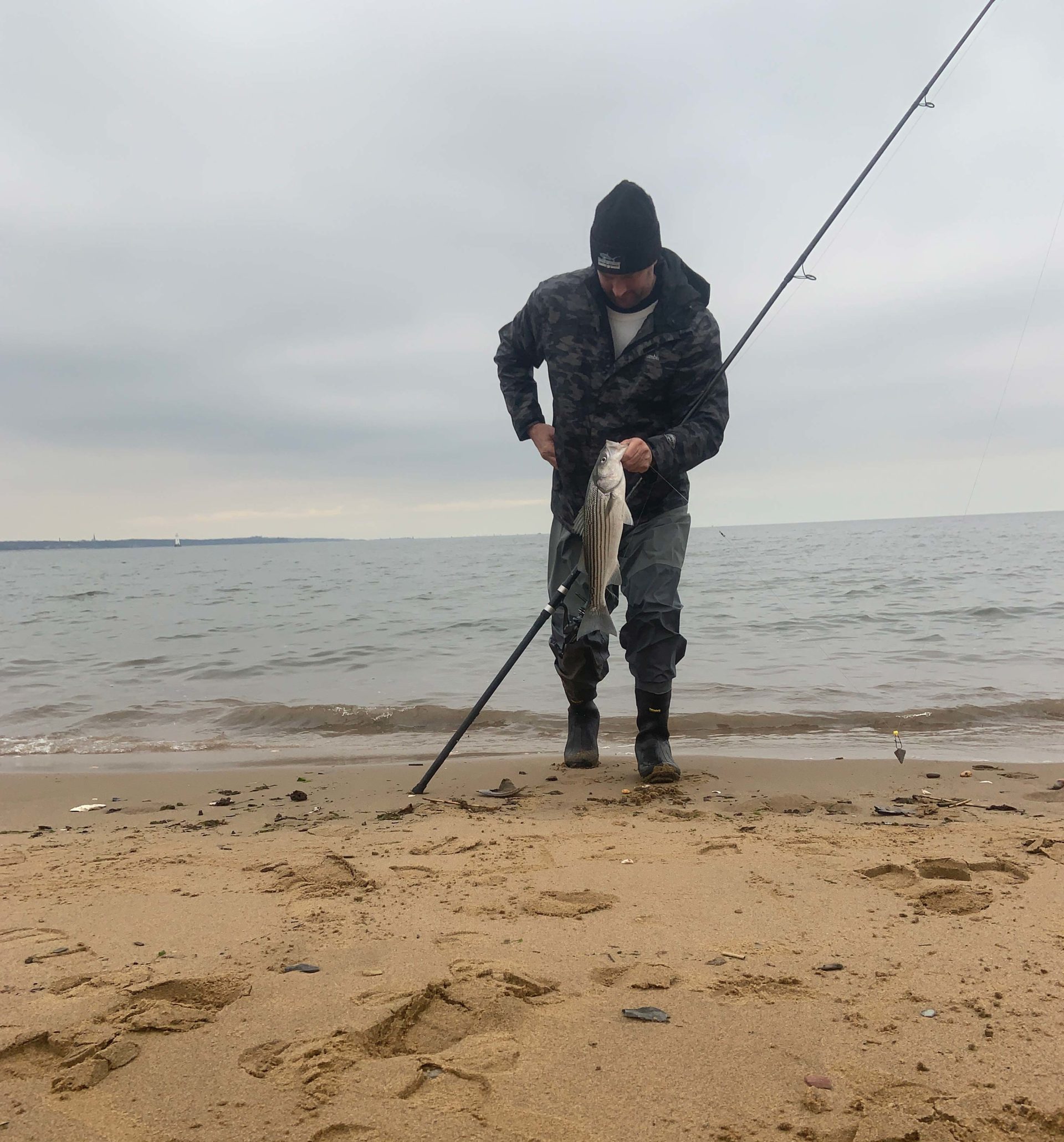
Jersey’s back bays and salty rivers are open again to striper fishing on March 1.
When the first wave of COVID came storm trooping through in March of 2020, the entire region was on lockdown, which meant that many fishing opportunities were shut down with it as charter boats, party boats and state parks were all shuttered indefinitely. It was a time to explore new, out of the way shorebound fishing spots where you couldn’t be found if the COVID police happened to be looking.
In March of that year, I knew of a spot along the Raritan Bayshore that was a little out of the way for casting bloodworms. With nary an angler around, I managed to reel in and release 18 bass from 22 to 29 inches with nothing but quietude surrounding me. I was sold on the Bayshore, and COVID be damned.
In that same vein of thought, why wait until May to tangle with bass? The entire Bayshore stretch is prime time grounds in March and April to find your first shorebound striper of 2022.
Walk The Walk
The Raritan Bayshore beaches aren’t like the soft white sand beaches along the ocean coastline, but more of a harder packed yellow sand and mud, combined with sedge banks and pebbly rocks, along with old brick and concrete dumps. In general, a gradually sinking slope extends into the heart of the bay.
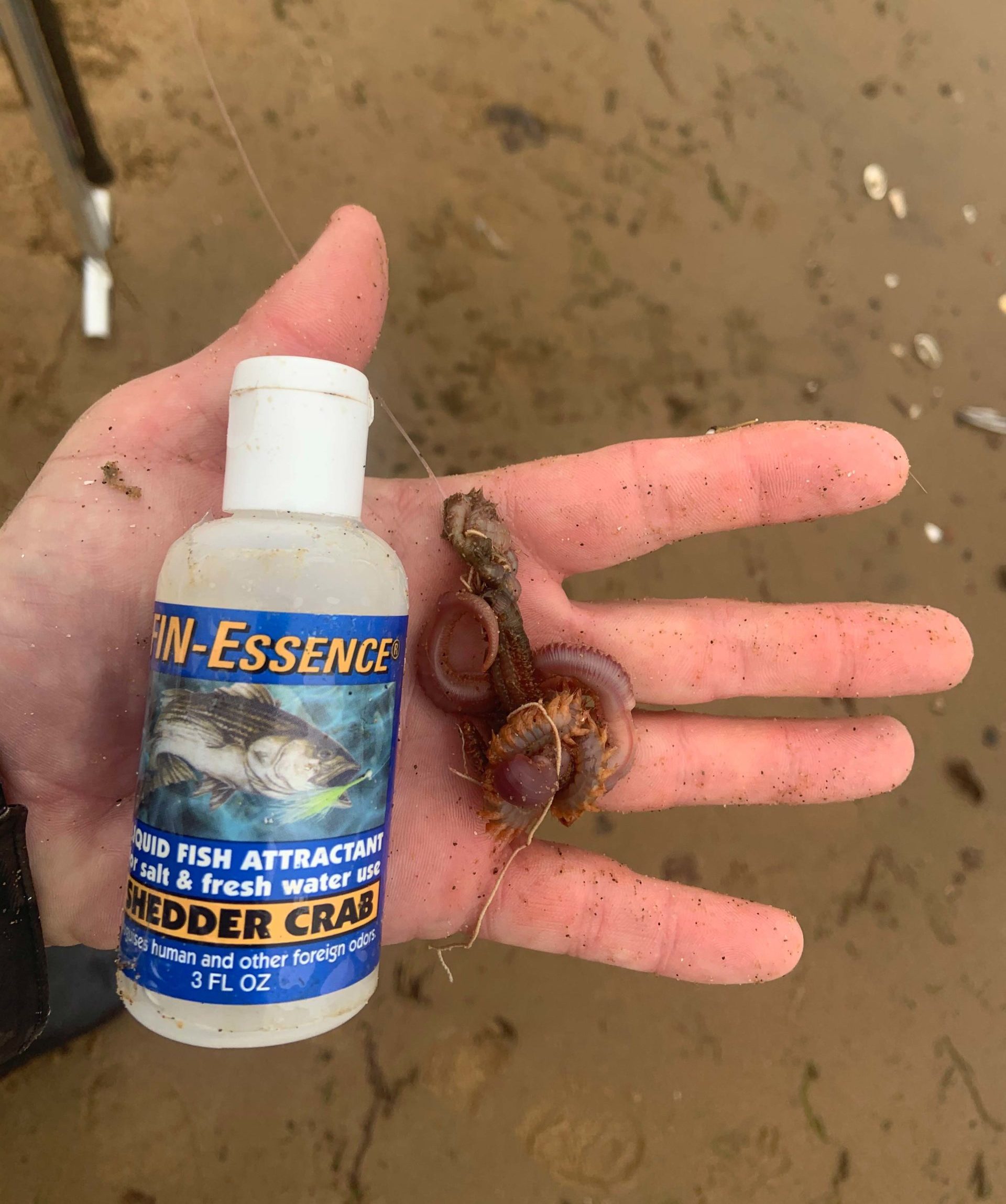
All along the stretch, there are striper spots to try out, including South Amboy, Old Bridge, Cliffwood Beach, Union Beach, Pebble Beach and Keyport. On any given day, one spot may be holding more bass and action than another, so it’s always prudent to have a plan of attack to try another nearby spot if you’re not finding any hits. The shallow waters mean the angler has to read tide phase, moon phase and time of day to effectively fish. Days around the new and full moon will have high flood tides to fish on the high tide mark, while the dead low tide hours mean the surfslinger can walk out 200 sometimes 300 yards and only be in knee-deep water to make a cast into a channel or slough.
Some spots like the Amboys have harder packed mud you can wade out into without worry. However, If wading out to cast in the Cliffwood area, be wary as the sod banks extend well into the bay, and on a mid or high tide time, may be submerged as you walk out, creating huge holes between sedges, meaning you could literally step off a cliff if you are not vigilant.
Legally, non-oceanfront, backwater bay stripers can begin to be targeted starting March 1. Whether or not you will have success on that opening day all depends on the water temperatures. For the past two years, water temps have been in the 46- to 48-degree range in early March, which sparked stripers to move around out of the creeks and into the bay to feed on a buffet of bloodworms, sandworms, mussels, clams and bunker.
The Raritan River system is a staging point for bass, as are stripers moving into Raritan Bay looking to spawn up the Hudson River, all of which can pass through the Bayshore beach areas. As waters hit the 50-degree and higher mark in late March and early April, the bite goes boom, where you can literally be into double-digit catches per tide, not only with the usual schoolies, but fish up to 20 or even 30 pounds.
Circle ‘Em Up
Bloodworms and sandworms reign as supreme bass baits after the winter thaw as the worms unearth themselves from the local Raritan Bayshore sedges. Circle hooks are mandatory now when fishing bait for striped bass and that has changed up the game just a tiny bit for bloodworming and sandworming stripers. Smaller, inline circle hooks from 3/0 to 5/0 sizes can be used such as from Addya, Owner or Gamakatsu; the folks at Eagle Claw have just met the needs of bloodworm and clam anglers with their new Striped Bass Inline Circle Baitholder Snells snelled with 18 inches of mono with easy-to rig loop for building into your bayshore striper rig.
So let’s start with the rig first. Personally, I like to employ a fishfinder slide rig with a small leader. Early season stripers are mostly fickle on the chew, meaning they will mouth up and chew around baits in a frustratingly consistent way and not take the bait like a knockout hit. You need to have patience and wait for them to inhale a good portion of the bait, thus the fishfinder slide rig allows for them to runoff and commit to the meal.
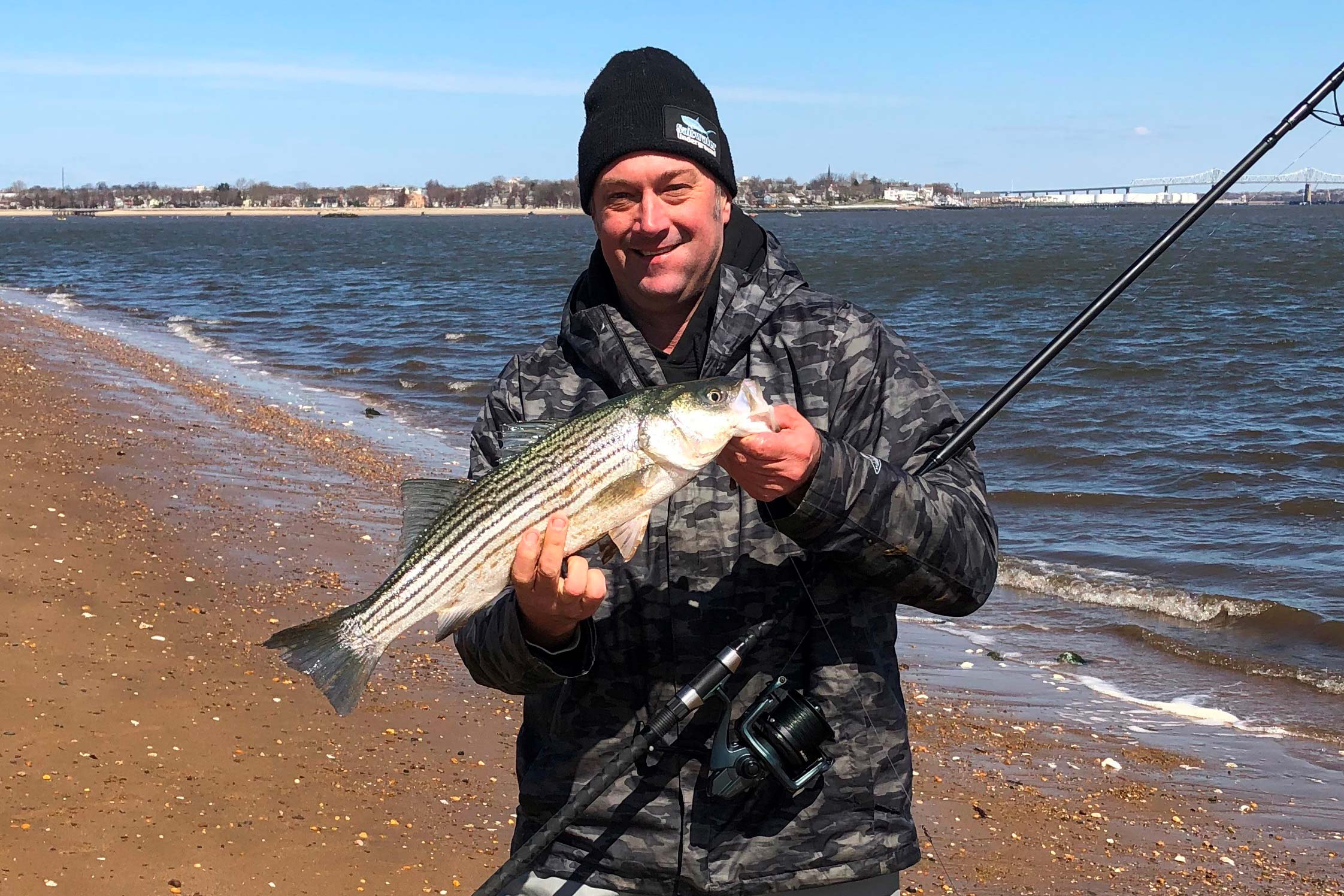
The rig starts with braided running line from the reel, then slide on a braid-friendly nylon sinker slide clip, then a 100-pound Barrel Swivel to which a short 18-inch length of 30-pound Seaguar fluorocarbon leader is snelled to the hook. Don’t skimp on the worm baits. Many hardcores will create a “worm ball” rig where the first whole worm is threaded on the hook with the majority of the body allowed to hang down, then two to three more worms are hooked on, pierced through the head, then wrapped around four or five times the shank of the hook to create a huge worm ball. Elastic thread is then used to tie down the whole worm ball so it doesn’t cast off on a cast nor get pulled apart easily by feeding bass.
A major help when worming is to douse all baits gratuitously with FinEssence Shedder or Clam juice available at most tackle shops, but mainly out of the tackle Box in Hazlet along the Raritan Bayshore. The juice really brings in any surrounding bass to come feed by the dozens and will absolutely increase your catch ratio as early season fish are feeding on scent.
| FOUR MORE TO SCORE |
In addition to spots along the Raritan Bayshore, the following salty rivers in the Garden State are worth a shot. True, some spots along the rivers may be better than others, and some of the fishiest points of land may already be shoulder-to-shoulder by the time you get there, a little prospecting and exploring away from the crowds could prove quite productive this month.
|
Pre-circle hook mandate, it was easy enough to hook a bass as the stripers would tap-tap the bait with the J-hook, you would hold the rod and feel the hit, then set back hard to plant the hook. Circle hooks now require much more patience. When the bass taps at the bait, pick up the rod, then reel the rig tight so there is no slack in the line. I tend to wait until the taps feel consistent back to back, then reel slowly until I feel weight on the line. If I do feel the weight of a fish, I begin to reel two or three cranks faster and raise the rod tip to set the hook, never rearing hard back on the rod. If I don’t feel any weight when reeling up the slack, I let the bait sit there as 95% of the time, the bass will come back to hit it as it’s only moved a foot or two away.
Bayshore bassin’ from the beach in March and April brings out the first smiles of the striper year. Be sure to find your spot along the shoreline this spring to worm up some freshly thawed out stripers.
